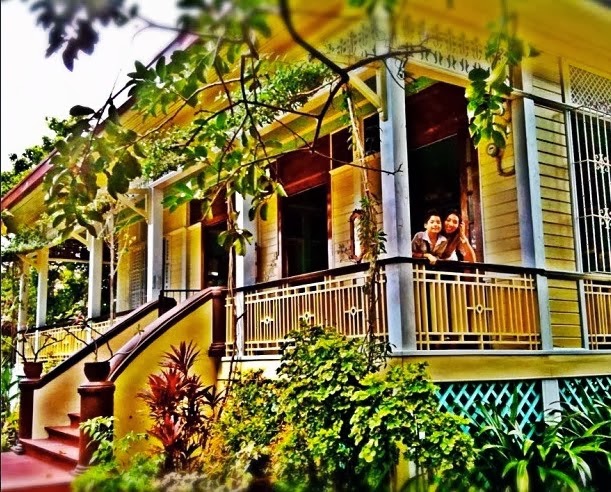INKONG
TASIO (Anastacio de Leon) & IMPONG BIYANG (Maria Gonzalez de Leon)
by Nunilo M. de Leon
Their Origins
Renato
“Sonny” Cano, Victorina “Turina” L. Cano’s son, has researched on this
subject. He says that Inkong Tasio was
probably born (in the late 1830s or early1840s, parentage still unknown) and
grew up in Baliuag, Bulacan. He
completed the “cartilla”, the basic education of those times, comparable to
today’s secondary education. He became the Sacristan Mayor in the parish church
of Baliuag, a position of trust which, in that era, carried a certain amount of
prestige. The priests then were
Spaniards. Tasio later moved to Malolos,
also as the Sacristan Mayor, and perhaps with the same priest, who might have
also been transferred to the Malolos parish.
“Impong
Biyang” was born in 1841 from still unknown parents. It is not clear where Inkong met Impo, who
was probably also from Baliuag. There have always been many Gonzalez-surnamed
families in that town. They were probably married in 1870, based on the 1872
birth year of their first-born. They both married late, in their late-20s, not
a common practice in those days of early marriages.
“Sonny” Cano has also looked into the Gonzalez
connection. According to his research,
there is a Gonzalez clan from Pampanga and Bulacan which originated in the town
of Apalit, Pampanga, across the Pampanga River from Calumpit, Bulacan. The sire was a Spaniard who claimed to be an
engineer from Villadolid in Spain and who introduced himself as Gonzalez. He married a young lady from the wealthy
Arnedo clan of Sulipan in Apalit. Later,
it was discovered that the “engineer” was actually an Augustinian friar, a
member of the Spanish nobility, Fray Francisco Lopez, and was a parish priest
of Baliuag, Bulacan, some ten kilometers up the Angat River from Sulipan.
It is to be noted, however, that the wedding
described in the above account happened in the mid-1850s and the off-springs of
this marriage would have been born in the 1870s, at the earliest. By that time, Inkong Tasio and Impong Biyang would
have been already adults. Impong Biyang probably
sprung from another Gonzalez clan; Gonzalez must have been a popular alias for
some “frailes”. There were quite a few
families with that name in Pampanga and Bulacan at that time. In the same narrative cited by “Sonny”, there
was mention of an hacendero Gonzalez family in Baliuag who also had a Spanish
“fraile” ancestor. It is possible that
our Gonzalez ancestors were from that clan.
